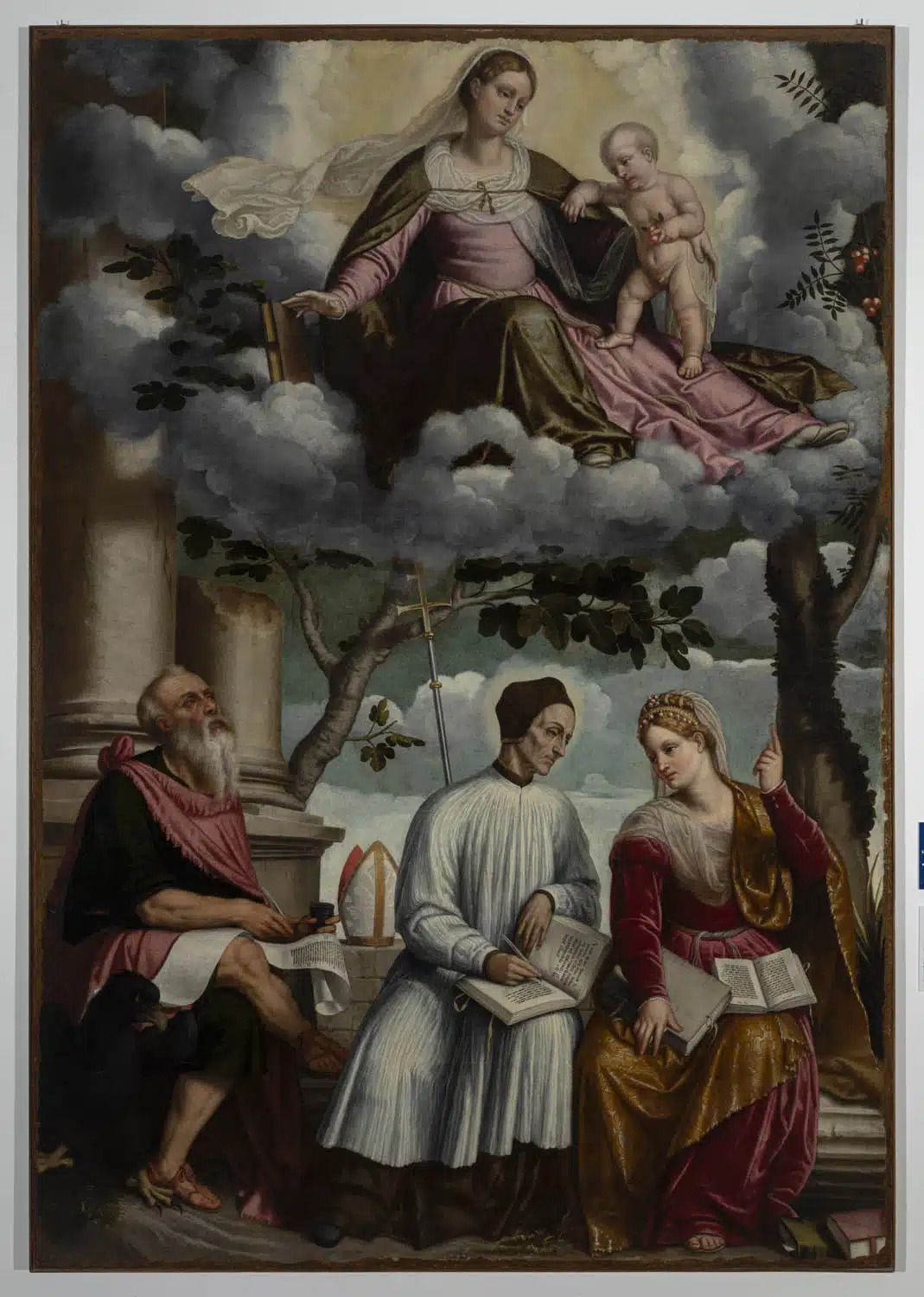Vision of Saint Rose of Lima
Author: Andrea Celesti (Venezia 1632-Toscolano Maderno 1712) - 283x182,5 cm
The canvas was initially conserved in the first altar on the right of the church of St. Clement in Brescia. Giovanni Antonio Averoldi admired it there in his book Le pitture scelte di Brescia printed in the year 1700. The same thing did Francesco Maccarinelli in his Glorie di Brescia published in 1747.
Before coming into the collection of the Museo Diocesano di Brescia, it was moved to the local Oratorio di Santa Maria delle Consolazioni, probably around 1840. In fact, in that same period, the church of St. Clement was hugely restructured by the architect Rodolfo Vantini.
It’s supposed that on this occasion, the canvas had been reduced by a few centimeters because it had to be transferred to a smaller framework.
Andrea Celesti’s autograph was already discovered by Giovanni Antonio Averoldi, who admired his delicate drawing and wise use of colors. The following critics confirmed the attribution.
The painting is generally dated between 1693 and 1695, a period in which Andrea Celesti stayed in Brescia. Yet, part of the critic supposes it to be grouped among his later works, thanks to a few similarities in the composition and the use of light.
The subject is a vision of St. Rose from Lima, born in 1586 with the name of Isabel Flores de Oliva. She then became a nun in the Third Order of St. Dominic and died in the same city in 1617.
During her short life, she dedicated herself to assisting the poor and the local indigenous people, but she was also known for her ascetic lifestyle and frequent visions. She was consecrated saint in 1671 by Pope Clement X and two years later declared the patron saint of Perú.
Andrea Celesti portrays Rosa in the foreground. She is kneeling in front of her writing desk while having one of her visions and looking up at the appearance of Baby Jesus and the Angels.
The scene is developed along a diagonal with rapid brush strokes, which define every kind of material and the delicate fleshy pink of Jesus and the little angels.
The light is used expertly, either the natural one of the wild landscape in the background or the strong, incandescent and pervasive light coming from the vision. It significantly cuts the darkness and compares the decay of nature to the supernatural perfection of God.





